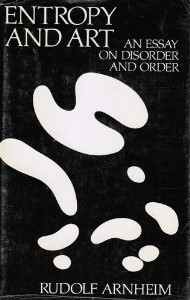Dick Raaijmakers: Method (1985/2009)
Filed under book | Tags: · causality, language, motion, perception, poetics

This book doesn’t offer the reader what its title promises. It is not a method in the sense of a handbook or operation manual. It is rather a travel guide, albeit for travellers who already have reached their final destination. In the first part of Method, the traveller is a ‘mover’, setting himself into motion to change the world according to his plan. In the second part, a ‘perceiver’ follows the mover in his footsteps and meticulously reports ‘us’ on it through views. ‘We’ in our turn, receive those views and forge them into new concepts and plans. Because we are also ‘movers’, who want to travel and change the world. We have come full circle.
The title Method is derived from the famous work La méthode graphique (1878) by the French physiologist E.J. Marey. He has been the first to put to practice the principle of making motions visible through cinematographic means. Just like Marey’s method, Method aims to be working like a film. It wants to transport the motions of the ‘mover’ before the readers’ eyes phase by phase, like film stills on a film tape.
In order to do so, the perspective of both dramatis personae in Method, the mover and the perceiver, is kept extremely flat and close. Likewise, all headwords in the field of motion and perception are interpreted literally, and expressed in so-called language-views. Method has been written to put these language-views in words.
First published in Dutch as De methode, Bert Bakker, Amsterdam, 1985
Edited and translated by Vincent W.J. van Gerven Oei
Publisher Onomatopee, Eindhoven, 2009
OMP34 / Cabinet project
ISBN 9789078454359
384 pages
via Vincent W.J. van Gerven Oei
Review: Rene Beekman (Leonardo).
See also Raaijmakers’ The Destructive Character (1992) and A Brief Morphology of Electric Sound (2000).
Comment (0)Rudolf Arnheim: Entropy and Art: Essay on Disorder and Order (1971)
Filed under book | Tags: · art, entropy, homeostasis, information theory, perception, physics, psychophysics

“This essay is an attempt to reconcile the disturbing contradiction between the striving for order in nature and in man and the principle of entropy implicit in the second law of thermodynamics; between the tendency toward greater organization and the general trend of the material universe toward death and disorder.”
Publisher University of California Press, 1971
ISBN 0520018036, 9780520018037
64 pages
Publisher (2010 edition)
Comment (0)Florian Hoenig: Computational Aesthetics and Visual Preference: An Experimental Approach (2006)
Filed under thesis | Tags: · aesthetics, complexity, computational aesthetics, computing, information aesthetics, perception, vision
Computational Aesthetics is a term which has been frequently used by scientists interested in quantitative approaches towards the concept of aesthetics during the last century. A review of both past and recent works attempting to quantify aesthetic preference of various stimuli is given, which shows that aesthetics was described as some function of complexity and order in many theories.
Since most measures were hardly relating to knowledge of human perception, complexity is reinterpreted in the context of a currently accepted model of visual perception and a hypothesis is formulated which states that human visual preference is not independent of complexity (cell excitation) at the very first stage of visual processing.
An estimate representative for cell activity in early visual processing is presented: Multivariate Gabor Filter Responses. Additionally, image properties such as aspect ratio, resolution and JPEG compressibility are used to sanity-check any correlations.
The estimate calculated, compared against human preference ratings of photographs, shows statistically significant but low correlations. However, the machine learning experiments performed, fail to predict any better than one would by taking the mean value of the data.
Even though these results only loosely relate to aesthetic perception, it’s motivating further research and closer inspection of image features and their relation to perceptual properties and visual (aesthetic) preference.
Thesis
Computer Science, JKU Linz, Austria
Supervisor Josef Scharinger
118 pages
PDF
View online (Scribd.com)

